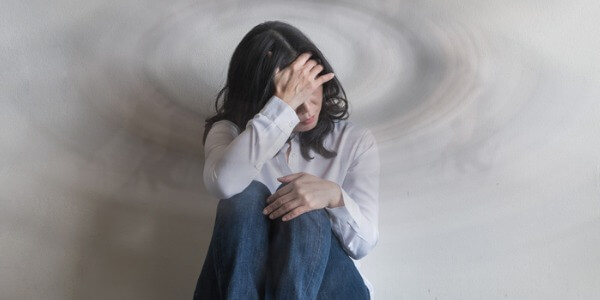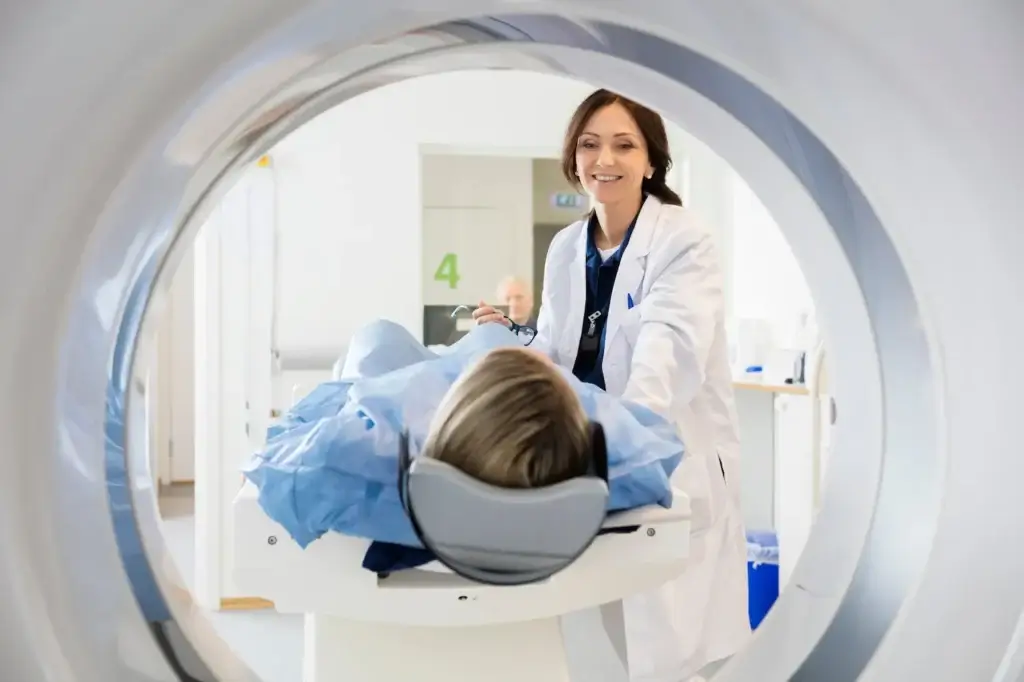Health Hub
Dizziness and vertigo: what is the difference, and what are the causes?

Feeling dizzy is a common enough experience – but when should you start to get worried about dizzy spells, and how does feeling dizzy differ from vertigo?
ENT surgeon Mr Paul Montgomery is one of the very few vertigo and balance experts in the UK and he has a 90% cure rate. Here, he talks through the key differences between dizziness and vertigo, and highlights four of the most common causes of dizziness.
What causes dizziness?
If you’re dizzy, you may feel a spinning sensation, lightheaded, unbalanced or woozy. Dizziness isn’t a disease itself but a symptom of many diseases.
There are many possible causes of dizziness – you could feel dizzy due to problems with your:
a) Inner ear, from conditions such as:
- Benign Paroxysmal Positional Vertigo (BPPV)
- Ménière’s Disease
b) Brain, from conditions such as:
- Vestibular migraine (also known as migraine-associated vertigo)
- Motion sickness
- Psychological trauma
- Severe medical Illnesses
c) Eyes, from conditions such as:
- Poorly fitted glasses
- Binocular vision dysfunction (meaning your eyes have difficulty focusing and absorbing two images at the same time)
d) Spinal cord and leg nerves, from conditions such as nerve damage (peripheral neuropathy).
What’s the difference between vertigo and dizziness?
The terms are often used interchangeably – but there are important differences.
Put in simple terms, “dizziness” is an umbrella term that covers a spinning, lightheaded, unbalanced or woozy sensation.
The term “vertigo” is a specific form of dizziness in which you experience a spinning sensation – you either feel like your surroundings are moving around you, or that you’re moving. It is usually, but not always, caused by an inner ear problem.
Dizziness can become a serious issue as you age, contributing to falls and potential injuries, and can become debilitating.
Four common causes of dizziness and treatments
Benign Paroxysmal Positional Vertigo (BPPV)

What is Benign Paroxsymal Positional Vertigo?
This is the most common cause of dizziness and is caused by dislodged crystals in the inner ear.
These crystals are usually firmly attached to a part of the inner ear that detects gravity, so that you know what is up or down. The crystals become dislodged and end up in a part of the inner ear that has ‘spin’ sensors, used to detect head turns.
The crystals hit the ‘spin’ sensors in this part of the ear and you experience vertigo.
BPPV only lasts a few seconds to a minute, but the effects can range from mild to severe.
What causes BPPV?
In most cases, a specific cause for BBPV can’t be found, although it can be caused by a head injury.
What triggers a BPPV attack?
It can be triggered when you lie down, sit up in bed, roll over in bed onto the affected ear, bend over to tie your shoelaces or reach up to a shelf above eye level. It is often called ‘morning vertigo’, as it tends to be worse just after waking up.
You may experience a persistent feeling of imbalance after the short-lived vertigo.
Other than dizziness, you won’t notice any change in hearing or buzzing in the ears. The dizziness is not usually associated with nausea.
BBPV often is more common in the elderly, people who have had long bed rests, those with Méniere’s disease (more on this below), migraine, head injuries or those who do yoga.
How is BBPV treated?
The good news is that BBPV can go away by itself within some weeks or months. One or two treatments of therapeutic crystal repositioning, where your doctor slowly manoeuvers your head to realign the crystals in your inner ear, can aid your recovery. Your doctor can also show you how to do these exercises yourself.
In the very rare instances that this doesn’t work, your doctor might recommend a bone plug surgical treatment. This blocks the part of your ear that causes dizziness and is very effective, with a 90% success rate.
Ménière’s disease
What is Ménière’s disease?
Ménière’s disease is a recurrent problem of the inner ear that causes attacks of vertigo.
What causes Ménière’s disease?
A build-up of fluid in the inner ear’s membranes gives you a feeling of pressure in the ear. These membranes then suddenly burst, making you feel very dizzy.
Ménière’s disease is characterised by two or more attacks of vertigo, lasting anywhere from 20 minutes to 12 hours, with fluctuating hearing loss and a feeling of fullness in the affected ear.
About a third of those with Ménière’s disease will experience a low frequency buzzing prior to a vertigo attack, which comes with nausea and vomiting.
However, about two thirds of people feel no warning of what is about to happen, and when the vertigo attack suddenly begins, vertigo, nausea and vomiting all happen simultaneously.
How is Ménière’s disease treated?
During an acute attack, lay down on a firm surface. Stay as motionless as possible, with your eyes open and fixed on a stationary object. Do not try to drink or sip water immediately, as you’ll be very likely to vomit. Stay like this until the severe vertigo passes, then get up slowly.
After the attack subsides, you’ll probably feel very tired and need to sleep for several hours.
For medicinal relief of the acute vertigo and nausea associated with Ménière’s disease, you may be prescribed either buccastem (prochlorperazine maleate) or cinnarizine, for no more than two days.
To prevent attacks, avoidance of high salt foods is advised and the use of betahistine (Serc) tablets, initially starting on 8mg three times a day.
Vestibular migraine

What is vestibular migraine?
Vestibular migraine is a particular kind of migraine where you experience dizziness. It is quite common.
What causes vestibular migraine?
The potential triggers for vestibular migraine are wide-ranging, from rapidly turning your head, through to eating certain foods, e.g. dark chocolate, hormonal changes during a period, stress, lack of sleep, taking hormone replacement therapy, caffeine, too much screen time and flashing lights.
The types of dizziness caused by a vestibular migraine attack can be very varied, ranging from vertigo to feeling unsteady when walking, to a constant swaying sensation. The dizziness can last anywhere from a few seconds to days, but typically lasts between five minutes and three days.
During an attack, you’re likely to experience nausea. Over half of those with vestibular migraine also experience an increased sensitivity to sound and light, and/or one-sided pulsing headaches, with a need to lie down in a darkened room.
You may experience ringing in your ears (tinnitus) or – in rarer cases – see visual distortions, such as zig-zag lines or flashing lights, feel numbness and tingling in parts of the body or difficulty speaking for between five minutes to an hour, which then resolves.
How is vestibular migraine treated?
If you have a headache-dominant migraine with only minor dizziness, a neurologist with an interest in migraine should treat you.
An ENT doctor should treat a vertigo-dominant migraine.
When the migraine attack happens, sleep in a darkened room. As with Ménière’s disease, lie on a firm surface and keep as still as you can. Once you’re feeling better, get up slowly.
Migraine can be treated with one of the following medications (unfortunately, the symptom of vertigo is not very responsive to these medications):
- One or two 500mg paracetamol tablets, every four to six hours – but no more than eight 500mg tablets in the space of 24 hours
- One or two 200mg ibuprofen tablets, every four to six hours – but no more than six 200mg tablets in the space of 24 hours
- Rizatriptan benzoate 10mg (Maxalt) on onset of migraine, then 10mg after 2 hours if migraine persists (if there is no effect, increase to a maximum dose of 20mg), prescribed by your doctor.
- A combination of a triptan and paracetamol, or triptan and ibuprofen, as recommended by your doctor.
Persistent Postural-Perceptual Dizziness (PPPD)
What is Persistent Postural-Perceptual Dizziness?
Often, the brain tries to fight against an initial onset of dizziness or vertigo. . This can help but, paradoxically, frequently actually leads to further imbalance, such as a continuous rocking sensation.
This is can also cause a feeling of exhaustion, but once recognised, PPPD can be treated effectively.
What causes PPPD?
It’s unknown what the root cause may be, but emerging research suggests that PPPD may arise from processing problems in the brain that control posture, multi-sensory information processing, or spatial awareness and threat assessment.
PPPD can be triggered by inner ear disease, migraine, periods of inactivity, fatigue, severe physical stress (illness, surgery, etc.) and severe emotional stress.
What differentiates PPPD from other diagnoses is:
- Longstanding dizziness (without the spinning associated with vertigo) on most days
- It’s association with anxiety and low mood
- Clinical examination, everything else appears normal
If you have PPPD, you’ll feel:
- Unsteadiness when upright, without actually falling
- Lightheaded, without fainting
- An altered mental state, e.g. an ‘empty feeling in your head’/’brain fog’
- Difficultly in describing your dizziness
These symptoms are present most days, often increasing throughout the day, and may fluctuate.
As a result of these symptoms, you might experience poor concentration, work difficulties, loss of confidence, poor motivation, panic attacks, low mood, poor sleep and anxiety.
How is PPPD treated?
The main form of therapy for PPPD is reassurance and vestibular therapy. Vestibular therapy works by training your body’s ability to balance and react safely to movement. This is done through specific eye and head exercises.
The following medications can also prove helpful:
- 10mg of amitriptyline, once a day at night for 4-6 weeks
- 20mg of citalopram in the morning (up to 40mg in morning after 3-4 weeks), if you have tiredness in the morning
- Mirtazapine (tetracyclic piperazinoazepine) for PPPD in combination with anxiety and sleep disorders
It’s important to bear in mind that reaching a diagnosis for your dizziness needs specialist attention as the conditions described above often have similar symptoms and can overlap. For example, vestibular migraine is often associated with Méniere’s disease, BPPV or persistent PPPD.
If you have persistent dizziness or vertigo, first see your GP. They can refer you on to an ENT surgeon who specialises in dizziness, as needed.
More information
- Your GP is a good first port of call if you experience dizziness or vertigo. They can refer you to a specialist for tests, who can then discuss your treatment options with you. (Don’t have a GP?)
- Mr Paul Montgomery is an ENT surgeon who specialises in vertigo and balance, and can provide expert treatment, advice and guidance. Make an enquiry.
Article Sections
Latest Hospital News
Should you wish to speak to our press team, please visit Press Enquiries




